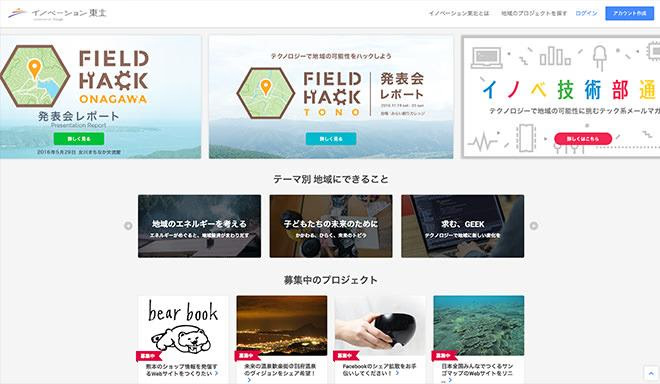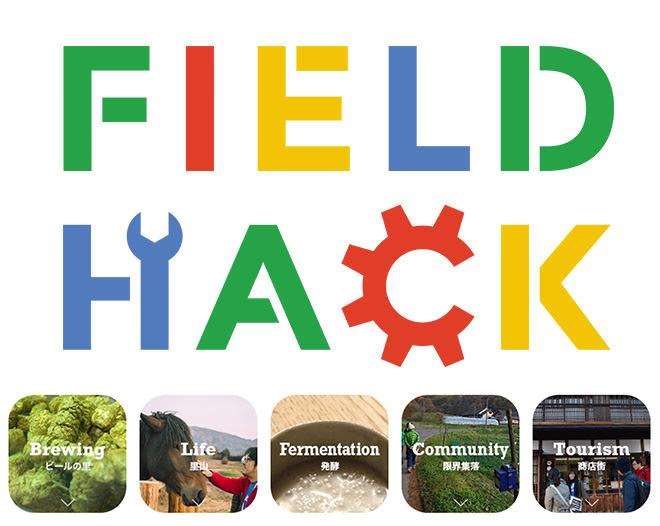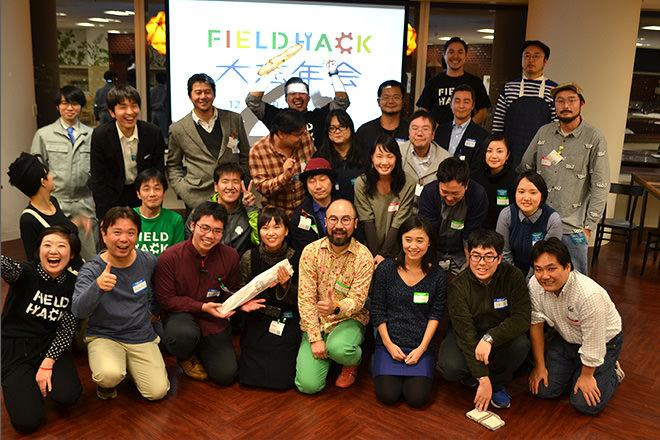Hello, this is Uehara from the Production Department.
Google Innovation Tohoku , one of the projects the Production Department is involved in, involves planning and running a variety of projects, and I am in charge of overall project management.
For me, one thing that is very important is to "over and over again visualize something." This is what is known as image training.
I work every day with the belief that the key to the quality of a project is how well you can visualize the goal and the process leading up to it in advance, and then accurately translate that into actual operations.
Recently, the second Field Hack project, co-hosted by Google Innovation Tohoku and the Institute of Advanced Media Arts and Sciences [IAMAS], was held in Tono, Iwate Prefecture. This time, we learned a lot about what goes beyond "repeating an image over and over again."
it is,
When the image of the project and reality become consistent,
The next ideal state becomes clear
That is what it means.
What is Field Hack?
First, let me briefly explain the overview of Google Innovation Tohoku and Field Hack. Innovation Tohoku is a matching platform that connects people who are taking on projects to revitalize their local communities with people who want to participate in those projects.

Google Innovation Tohoku website. Discover new ways to get involved with the local community by participating online without changing your location or job.
Innovation Tohoku and the Institute of Advanced Media Arts and Sciences [IAMAS] are hosting a new project called Field Hack!, which began in 2016. This project involves teams of engineers, designers, project managers, and others from across the country tackling a theme set in their region using technology. The second event was held in Tono City, Iwate Prefecture, with the cooperation of Next Commons Lab (NCL).

This time, five themes were set for Tono City: "Beer Village," "Fermentation," "Satoyama," "Marginal Villages," and "Shopping Districts."
Learning from Field Hack ONAGAWA
The first event was held in Onagawa Town, Miyagi Prefecture in May, and as it was the first time, things did not go as expected and we received some harsh yet loving feedback from the participants.
For example, because the organizers were in charge of forming the teams, it took time for the team members to communicate and assign roles, and some teams ended up with members who had not yet figured out how to contribute to the short period of time required to develop prototypes.
Additionally, because the granularity of the theme was unclear, it took a long time for the participants to find issues and possibilities that they thought were right during the fieldwork, and for them to align the direction of the prototype with the local community.
(Among them, each team was able to understand the intention well and develop a prototype in time for the presentation.)
In order to make use of what was learned there, for this year's Field Hack we made changes so that participants would form teams themselves at the time of application, reducing the costs of subsequent communication and division of roles.
In addition, in order to properly fine-tune the themes, we held numerous meetings with local residents, and in order to improve communication during the event, we introduced a local coordinator system to act as an intermediary between the local community and participants.
We took these improvements into account when taking on the second event, and it went smoothly throughout the duration (although there were many small areas we could have done better).

A photo with the participants and everyone from Tono after the presentation.
Continue to image
In addition to the improvements mentioned above, there are other common points as well, but as with this topic today, it is very important to continue to visualize the whole picture.
The flow of Field Hack can be roughly summarized as follows:
1. Goal
First, we imagine the scope of the entire project based on the characters involved: what each of the people involved, including local residents, participants, and organizers, wants to achieve through Field Hack, and what state will it be in when they achieve that goal.
2. Program Content
Based on the goal image, consider the program contents that are the key to success while checking the timeline, and imagine what the ideal state should be at each stage.
3. Tasks
Steps 1 & 2 will give you an overall picture, so you can start organizing your tasks and get an idea of what will happen and when, and what is required.
4. Operation
3. While checking the timetable and program, imagine how participants can move most smoothly and to what extent the organizers can handle it, while leaving some room for flexibility.
I think the process goes something like this, but the image is not just something you have, it is important to share it with the people involved and get feedback. There are limitations to what you can do on your own, so by getting multiple opinions, I think the accuracy will improve even more.
The image and reality become consistent
Once you have a satisfactory image of the flow of operations, all that remains is to wait for the day. Once the event begins, unexpected things and accidents will inevitably occur, and you will need to be flexible in your response, but you cannot make major changes.
We will check and respond to ensure that what you have imagined is carried out properly.
I think the accuracy of this Field Hack TONO was much higher than ever before.
- Participants returning from fieldwork inspired
- Talking with local people on an equal footing
- A team working together to come up with ideas and concept sketches in a short amount of time
- A proper prototype was made before the presentation, and they were having serious discussions with local residents about the future.
And so on and so forth, the things I had imagined would happen were actually happening right before my eyes.
When we were able to confirm that the image and reality were consistent,
Once again, I was able to see the unique features of Field Hack and its future potential.
Field Hack is a project that allows people to take the first step by developing a prototype through fieldwork and discussions with local people.
Looking at the project in the long term, including the phase of commercializing it and actually implementing it in the community, I think this is a very small step, but at the same time, it is also the most important step.
I was reminded that Field Hack is a catalyst for creating change in the community using the power of technology.

Fieldwork and idea/concept sketches
With this realization, I was able to start concretely imagining what would come next for Field Hack.
How can we help you perfect your prototype in the future?
How can we implement the completed product and give back to the local community?
Where do you see Field Hack expanding in the future?
We were able to visualize opportunities for Field Hack to grow as a project, and the next discussion started to emerge. Of course, there are areas for improvement this time, but we are also happy that we have taken a step forward into the next phase.
It was an opportunity for me to realize that the moment when what I had imagined began to be projected into reality was the catalyst for my further growth.
As our next step, we held a year-end party, inviting past Field Hack participants and those who are interested, in the hope of building horizontal connections that will spark new initiatives and ensure each project continues for the long term.

Field Hack 2016 year-end party. Held jointly by participants from Onagawa and Tono.
With a mix of past participants and those who were just interested, passionate discussions were taking place here and there. I felt that a wonderful community was beginning to form. This time, I wrote about what I imagined, but I don't think I would have been able to feel that way without the cooperative attitude of all the participants. (I'd like to write about this wonderful community again sometime!)

